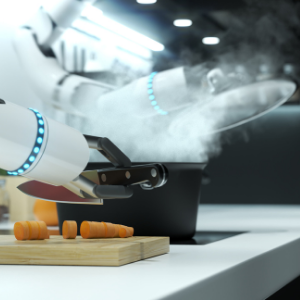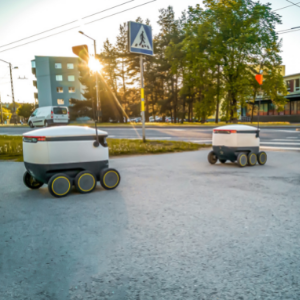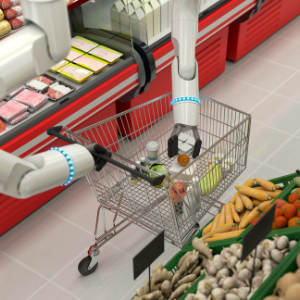With concerns of practicing social distancing guidelines and minimizing the spread of diseases and bacteria, the food industry has taken automation more seriously than ever. Operators have recognized that implementing robots in the food industry helps employees in serving, cooking, cleaning, and other simple tasks. If you think automizing your restaurant will help increase efficiency, consider how the following robots available to operators can help run your business.
1.Robot Waiters
This type of foodservice robot is the one most people are familiar with. Robot waiters do everything a human waiter can do which includes:
- greeting customers
- serving meals and beverages
- picking up finished dishes and cutlery
Customers might appreciate the fact that these waiters won’t need to be tipped but some might find interacting with robots to be impersonal. Restaurants that have robot waiters have tried to humanize robots by giving them names, dressing them in scarves, or assigning them an identity.
Robots at your restaurants aren’t just great at helping out your human staff, they offer great entertainment too. You can use the robot to draw in new customers who are interested in a unique dining experience. However, some argue that robots are more of an attraction than a useful tool in restaurants.
 2. Robot Cooks
2. Robot Cooks
The most high-tech of restaurant robots, these automated cooks are usually designed with “arms” and “hands” that imitate human movements which include:
- Mixing and stirring
- Retrieving ingredients
- Operating equipment
- Preparing meals and drinks
- Cleaning up
Not all robot cooks are the same, however. Depending on the model, robot cooks can be programmed to create a number of dishes or a specific dish. They can also be programmed to do simple tasks such as flipping pancakes or slicing noodles. But as advanced as a robot cook can be, they still require to be supervised by a chef to make sure they don’t malfunction.
 3. Delivery Robots
3. Delivery Robots
With a rise in demand for take out and delivery services, restaurants often find themselves overwhelmed with these types of orders and are turning to delivery robots for help. Many of these types of robots are designed with a tamperproof compartment to keep prying hands away from meals and groceries.
The only problem is that these robots can’t handle long distances and do not fare well in harsh weather conditions or unexpected terrain/obstacles. Nevertheless, they have proven successful on college campuses. When it comes to long distances, self-driving cars seem to be a much more efficient way to deliver orders.
 4. Grocery Store Robots
4. Grocery Store Robots
To increase efficiency, small and big-chain grocers have begun to use grocery store robots in order to make things easier on their employees. These robots are designed with many different features such as:
- sensing hazards
- alerting employees
- cleaning floors
- stocking shelves
- delivering groceries to shoppers
Due to the pandemic, grocers have had to shorten their service hours in order to deep clean their stores at night. These types of robots have proven to be a great help in easing the workload on employees and keeping establishments sanitized.
Robots Are The Future
As robots become more and more sophisticated, it is safe to say that they are here to stay. While they can threaten the jobs of restaurant employees, the fact remains that people will always prefer to communicate with other people. Having a mixture of robots and humans as employees will satisfy your desire to increase efficiency and customer’s desire for human interaction.






